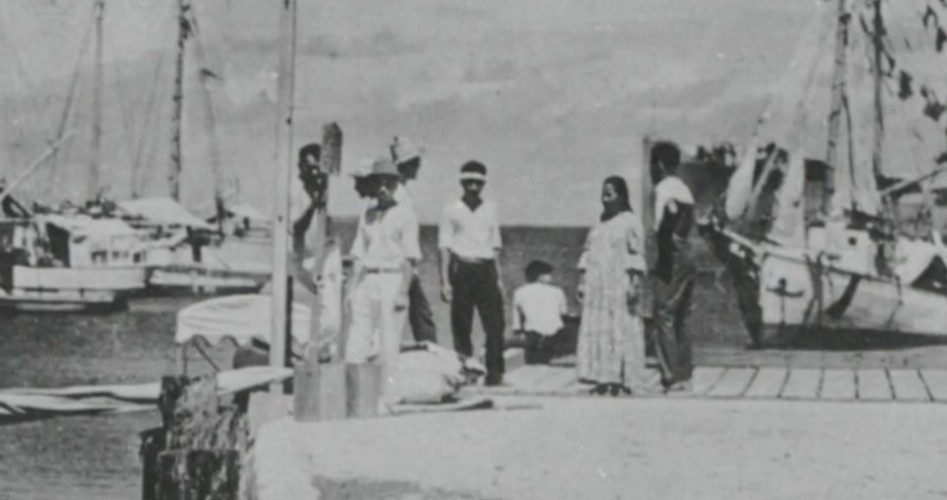
New evidence has emerged, calling into question the History Channel’s documentary on Amelia Earhart and the core piece of evidence that, according to the documentary, answered the mystery of her disappearance.
“Amelia Earhart: The Lost Evidence” aired on July 9, with nearly two hours of dramatized investigative information of the female pilot who went missing 80 years ago along with her navigator, Fred Noonan. The most prominent piece of information, touted in previews and throughout the special, was a photograph (shown) discovered in the National Archives supposedly showing Earhart and Noonan on a dock in the Marshall Islands just after their disappearance in 1937. (In the photo, the person the History Channel identified as Earhart is in the center, with her back to the camera, and the person identified as Noonan is on the far left.) With forensic examiners to study the photo and make the determination that the figures in question were “very likely” Earhart and Noonan, the docudrama went on to supply information supporting evidence that the aviators had landed on the islands and had been captured by the Japanese.
However, after research of his own, Japanese military history blogger Kota Yamano challenged the photo based on the inaccuracy of the declared date, noting that the picture had been published in a Japanese-language travelogue in 1935, two years before the historic disappearance. In his blog, Yamano wrote of his discovery:
The photograph was first published in Palau under Japanese rule in 1935, in a photo book; Motoaki Nishino, ‘Umi no seimeisen : Waga nannyou no sugata… So the photograph was taken at least two years before Amelia Earhart disappeared in 1937 and a person on the photo was not her.
The book Yamano refers to has now been published online by Japan’s National Diet Library.
In response to this new information, the History Channel reports that it will be examining the claims of Yamano:
HISTORY has a team of investigators exploring the latest developments about Amelia Earhart, and we will be transparent in our findings. Ultimately, historical accuracy is most important to us and our viewers.
However, as Yamano noted in his interview with The Guardian:
I find it strange that the documentary makers didn’t confirm the date of the photograph or the publication in which it originally appeared. That’s the first thing they should have done.
Interestingly, it took Yamano “just 30 minutes to debunk the documentary’s central claim,” according to The Guardian.
If, indeed, “historical accuracy” is what is ultimately important, one is left to wonder, along with the history blogger, why the major cable network had not already determined the validity of the date of the photograph or its original source. Not only did the documentary claim the wrong date on the picture, but the origin was also incorrect.
According to the preview for the docudrama, the “previously unknown photo” was asserted to have been taken by someone who was likely killed for being a spy. The investigative team in the special went on to say that it was discovered in the National Archives bearing the Office of Naval Intelligence (ONI) stamp, and claiming it was top secret.
As it turns out, however, the image was unlikely spy material, as it merely depicted schooner racing among local tribal leaders at the time. And, as it has already been determined that the picture was originally published in a Japanese history book in 1935, one can draw the conclusion that this photo was neither unknown nor top secret.
Whether deliberate or in ignorance, these inaccurate, over-dramatized assertions are unjustified and show a lack of integrity. It is hoped that the History Channel will be more diligent in their investigation of the infamous photograph than they were previously, and that they will indeed be “transparent in [their] findings.”



